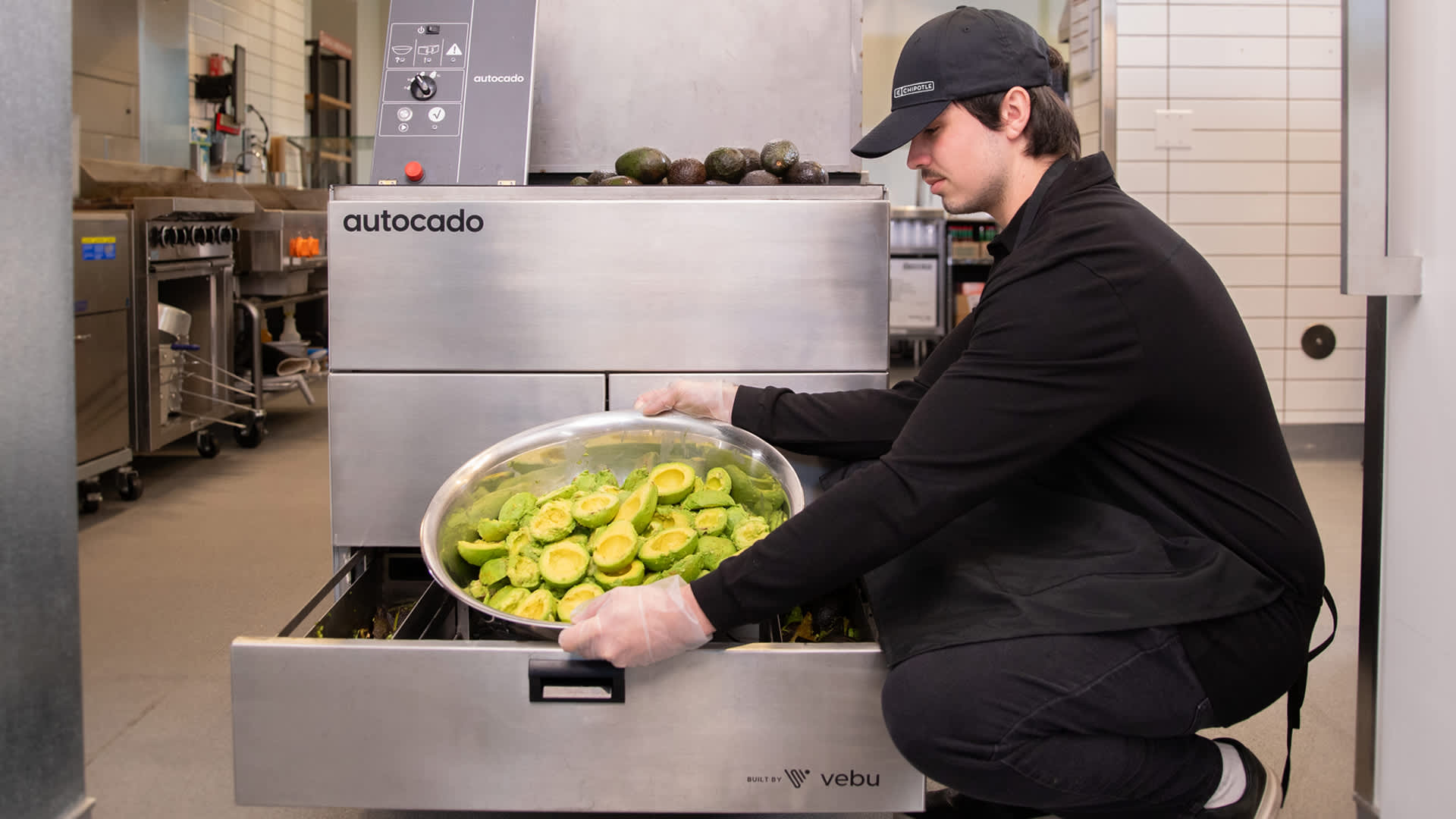There’s no denying automation will eliminate certain jobs in the coming years.
But as companies adopt robots on manufacturing floors, in kitchens and on delivery routes, workers have a growing opportunity to join the ranks in helping to build and implement the technology.
Both humanoid and nonhumanoid robots are set to reduce employment in the years to come, as nearly equal amounts of companies say they’re expecting growth, worker displacement or a neutral effect due to the technology, according to the World Economic Forum’s Future of Jobs Report for 2023 forecast. The sectors most likely to adopt robotics are electronics, energy tech and utilities and consumer goods, according to the study.
The effects may differ depending on the industry.
For example, the WEF study found 60% of companies operating in the production of consumer goods and the oil and gas industry project jobs will be lost due to automation. On the other hand, 60% of companies operating in information and technology services expect jobs to be created due to robots in the next five years.
Robots in the lab at the Rosenstiel Campus in Miami.
Jose A. Iglesias | Tribune News Service | Getty Images
Robotics company Zipline is among the companies looking for employees, as it aims to add at least 100 workers. The San Francisco, California-based startup designs, builds and operates autonomous delivery drones, working with clients that range from more than 4,000 hospitals to the government of Rwanda and major brands such as Walmart, GNC, Toyota and Sweetgreen. Roles are open in positions from electrical and mechanical engineering to coding and security.
“Even in a world where a lot of startups are doing layoffs or sort of playing defense, this market is big enough and exciting enough that the plan is really being very aggressive over the coming couple years,” Zipline CEO Keller Rinaudo Cliffton said.
The current delivery ecosystem is slow, expensive and not good for the environment, Rinaudo Cliffton said. The opportunity to make it over with automation has benefits for customers, workers and the planet.
“Technology is sometimes changing the nature of jobs, but typically, it’s just dramatically increasing the productivity of any given person,” Rinaudo Cliffton said. “Before, we were using a human to do one delivery at a time driving a car one at a time to go and make deliveries. Now, we’re training that human to maintain and manage a fleet of robots. So that human can now do 50 deliveries in an hour rather than five, and that enables us to pay that human a lot more. These are jobs that people actually really want.”
The use of automation at companies large and small has two advantages, the Association for Advancing Automation argues. It reduces challenges for workers in taking away monotonous or dangerous tasks in their day-to-day roles and it keeps companies competitive and speedy in the production process. It can also help to solve an ongoing labor shortage.
“From a worker standpoint, it’s another tool — a tool to help you become more effective in the job you’re currently doing, to make you better eligible to get the job for the future, which are often better, safer and higher-paying jobs,” said Jeff Burnstein, the president of the group known as A3, which has 1,200 member companies all across the globe.
Businesses have to strike a delicate balance between using automation to make employees’ lives easier without replacing them entirely. Unions and labor rights advocates have often fought the adoption of robotics, worrying that it could replace some human functions entirely.
Burnstein points to China’s large-scale adoption of robotics as evidence that automation has become more important for companies to maintain an edge in business.
“China is the largest user of robots in the world by far. That tells you that this tool is so important that even countries that have an abundance of labor and low-cost labor still need to automate in order to stay globally competitive,” he said.
Avocados sliced, cored and peeled by the Autocado robot created by Chipotle and Vebu Labs.
Source: Chipotle Mexican Grill
Automation has also started to take hold in food service as companies try to make restaurants more productive.
Vebu Labs, based in El Segundo, California, is working with Chipotle on a robot that helps prep avocados for its guacamole, dubbed the Autocado. The burrito chain has also been testing out a chip-making robot from Miso Robotics, Chippy, as it aims to free up workers to focus on other tasks in the kitchen and make their labor more effective.
Vebu wants to bring on over 40 workers in the U.S. in roles from engineering to accounting to fabrication.
“The demand for our services is through the roof because the problem is so acute — the problem of labor in restaurants is so acute,” Vebu CEO Buck Jordan said. “It’s not a problem that is going to go away anytime soon. It’s not a transitory thing. It’s not caused by Covid. This is caused by a lack of workers in the workforce.”
While robots and automation may be solving labor pains for certain sectors, there’s a shortage of workers for the suppliers of the technology. A3’s Burnstein said the workforce needs more training on how to use and build robots.
“As a country, we often have a mindset that the only way to get a great job is to go to college, get a four-year degree, get a Master’s, get a Ph.D. — [that’s] not true,” he said. “There are companies hiring people right out of high school because of this labor shortage that they have in terms of technical skills. We have to address this as a country because otherwise, companies who want to adopt automation are challenged with the ability to do it because they don’t have anybody on staff that knows how to operate the machine.”
— CNBC’s Kasey O’Brien contributed to this report.














































